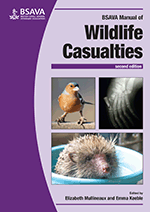
Full text loading...

This chapters birds of prey indigenous to the British Isles, including the common kestrel, peregrine falcon, common buzzard and snowy owl. A third of raptor wildlife admissions suffer fractures, and this chapter includes a review of the assessment and treatment options for orthopaedic injuries. This chapter also covers: ecology and biology; anatomy and physiology; capture, handling and transportation; clinical assessment; first aid and hospitalization; anaesthesia and analgesia; specific conditions; therapeutics; husbandry; rearing of young raptors; rehabilitation and release; and legal considerations.
Raptors, Page 1 of 1
< Previous page | Next page > /docserver/preview/fulltext/10.22233/9781910443316/9781910443316.29-1.gif

Full text loading...








